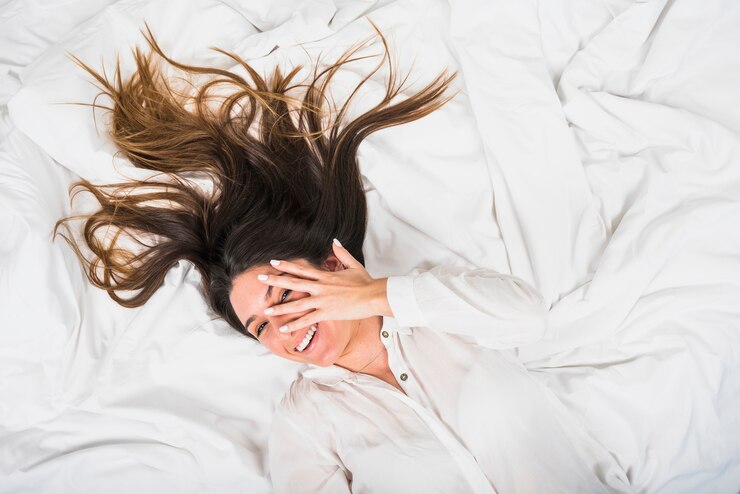The age-old question of whether or not it’s harmful to sleep with wet hair has been a topic of debate for generations. While some believe it’s a harmless habit, others claim it can lead to a host of hair and scalp issues. Let’s delve into the science behind this common practice and uncover the truth.
Thank you for reading this post, don't forget to subscribe!Sleeping with Wet Hair
Our hair is composed of keratin, a protein that provides strength and structure. When hair is wet, the hydrogen bonds within the keratin strands loosen, making the hair more susceptible to breakage and damage. The friction caused by tossing and turning during sleep further exacerbates this issue, leading to tangled, frizzy, and broken strands.
Potential Effects of Sleeping with Wet Hair
- Hair Breakage and Split Ends: As mentioned earlier, wet hair is more fragile and prone to breakage. This is especially true for chemically treated hair, which is already weakened by the harsh chemicals used during coloring or bleaching. Sleeping with wet hair can aggravate this damage, leading to split ends and a brittle hair texture.
- Fungal and Bacterial Growth: A damp scalp provides an ideal environment for the growth of fungus and bacteria. These microorganisms can thrive in warm, moist conditions, potentially leading to scalp infections such as dandruff or seborrheic dermatitis.
- Frizziness and Tangles: The friction between wet hair and the pillowcase can cause tangles and knots, making hair difficult to manage. This can lead to frustration and further damage during detangling.
- Scalp Irritation: The constant rubbing against the pillowcase can irritate the scalp, causing redness, itchiness, and discomfort. In some cases, it may even lead to inflammation or folliculitis, an infection of the hair follicles.
Also read: How can women get better sleep
Tips for Sleeping with Wet Hair
While it’s generally advisable to avoid sleeping with wet hair, there are a few things you can do to minimize the potential damage if you find yourself in this situation:
- Partial Drying: Before bed, use a microfiber towel or a T-shirt to gently dry your hair as much as possible. This will remove excess moisture and reduce the risk of breakage.
- Silk or Satin Pillowcase: Switch to a silk or satin pillowcase. These smoother materials create less friction against your hair, minimizing tangles and breakage.
- Protective Hairstyle: Loosely braid or tie your hair into a low ponytail to prevent it from tangling and rubbing against the pillowcase.
- Wash Bedding Regularly: Regularly wash your pillowcases and bedsheets to prevent the buildup of bacteria and fungi that can thrive in moist environments.
- Deep Conditioning: Deep condition your hair once a week to replenish moisture and strengthen the hair strands, making them more resilient to damage.
Alternatives to Sleeping with Wet Hair
Ideally, it’s best to avoid sleeping with wet hair altogether. Here are some alternatives to consider:
- Air Drying: Let your hair air dry naturally whenever possible. This is the gentlest method of drying your hair and helps prevent damage.
- Diffusing: If you’re short on time, use a diffuser in a low heat setting to gently blow-dry your hair. This will minimize heat damage and prevent frizziness.
- Protective Wrapping: If you must sleep with damp hair, wrap it in a silk or satin scarf to minimize friction and tangles.
While sleeping with wet hair may not cause immediate harm, it can lead to long-term hair and scalp issues. By following the tips mentioned above and taking steps to avoid sleeping with wet hair altogether, you can keep your locks healthy, strong, and looking their best.



